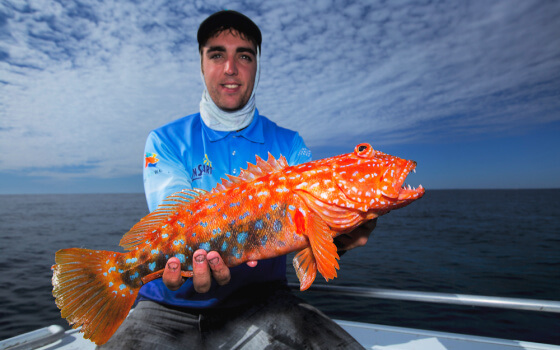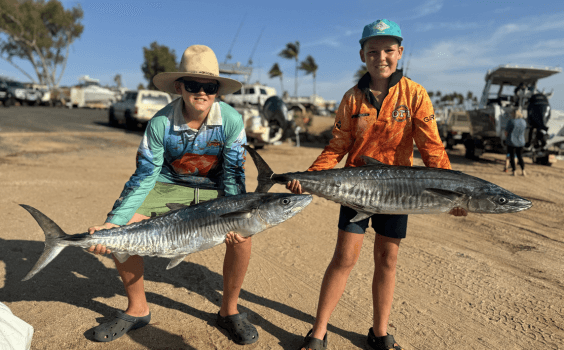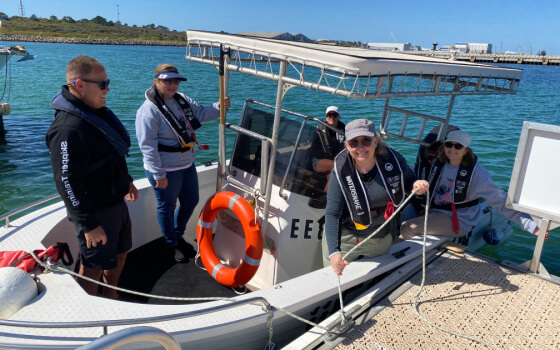In this week’s Scott’s Species, Western Angler editor Scott Coghlan turns his attention to one of the most eye-catching fish off the WA coast — harlequin fish.
Species: Harlequin fish, Othos dentex
Eating: 4 stars
ID: Red or orange colouration, with yellow and blue spots.
One of the most striking fish in WA waters, many people joke harlies are the coral trout of the south because of their amazing colouration.
They have blue, yellow, red-orange and brown colours and can’t be mistaken for any other fish in the areas they are found.
They also have some serious teeth, indicating the sort of serious predator they are.
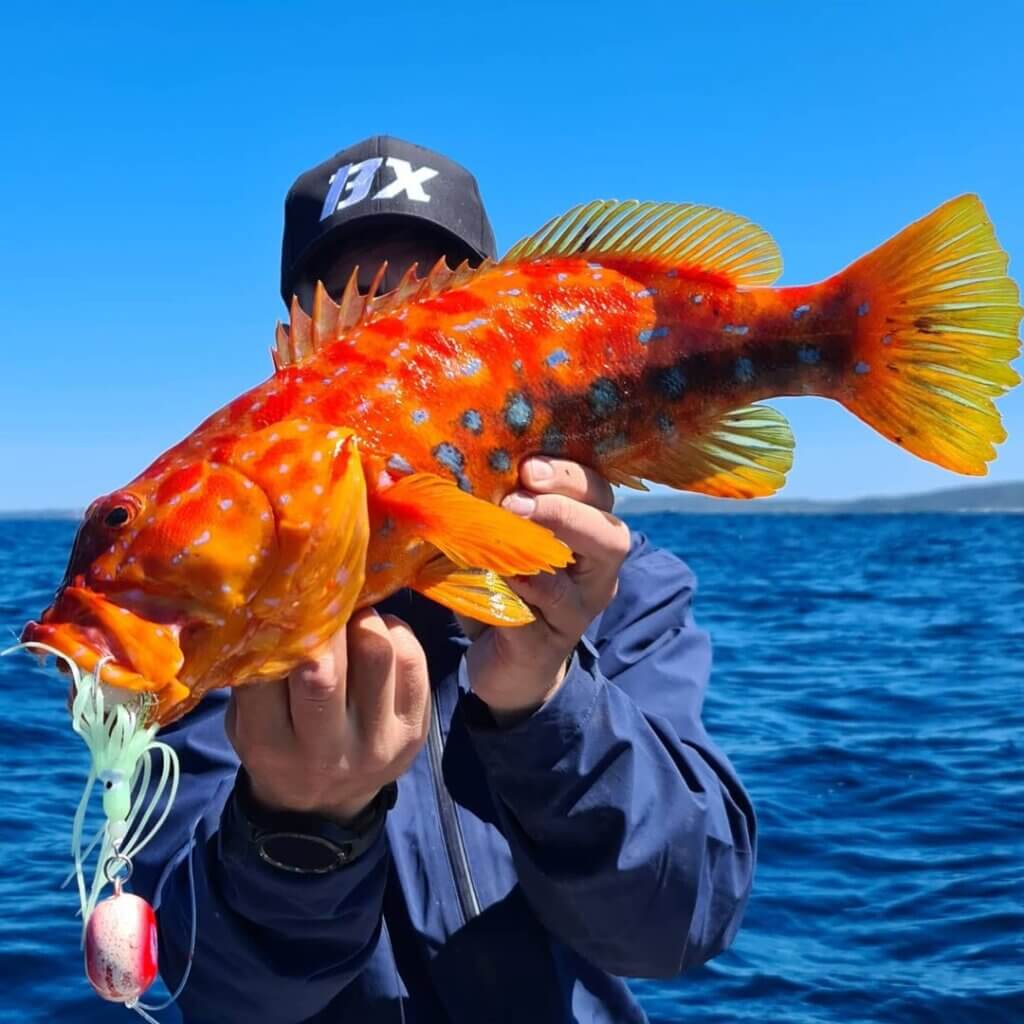
Harlies are normally caught by boat fishers, but are also caught from the rocks along the south coast.
They are found as far north as Jurien Bay and are regularly caught in Perth waters, but are very much a south coast staple, where they are a common offshore catch off Augusta, Albany and Esperance.
However, I caught my first one along the Five Fathom Bank as a youngster and remember wondering what this amazingly colourful fish was.
Although harlequin fish can grow to almost 5kg, most caught will be 2kg to 3kg.
Harlies are hard to target specifically and are usually an opportunistic catch as they don’t tend to venture far from their underwater lairs, but are caught with all the usual techniques employed by fishers chasing demersals and fishing the bottom.
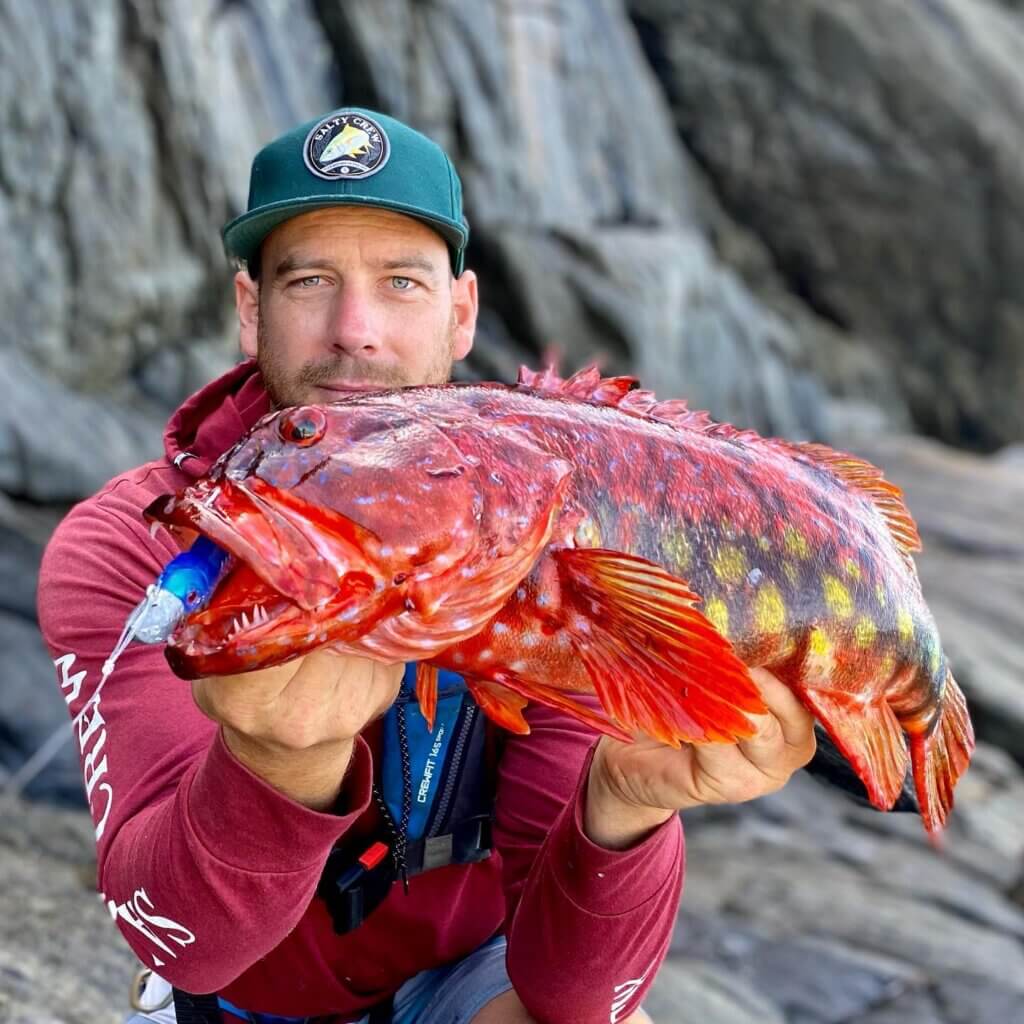
Usually found around reefy areas or broken ground, they are best caught in depths from 10m to 50m.
They are happy to take jigs and baits of all the usual varieties including squid, fish pieces/fillets or mulies.
In recent years most of the ones I have caught have been on jigs in shallowish water.
Large soft plastics of 10cm to 15cm in length are also very effective on harlies.
Simple paternoster rigs with appropriate weight for the area being fished are all that is needed when bait fishing.
They have a large mouth and big hooks work well on them.
Harlies are aggressive hunters but aren’t particularly strong fighters. There is a bag limit of two fish on the west coast, and three on the south coast.
